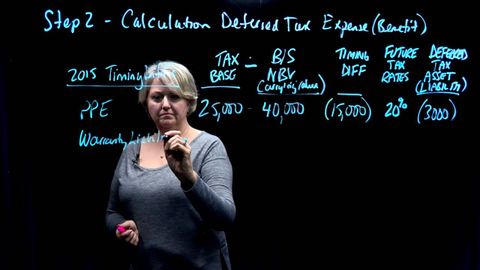
Subtitles & vocabulary
Income Tax Accounting (IFRS) | Calculating Deferred Tax Expense - Part 3 of 4
00
陳虹如 posted on 2017/06/23Save
Video vocabulary
entire
US /ɛnˈtaɪr/
・
UK /ɪn'taɪə(r)/
- Adjective
- Complete or full; with no part left out; whole
- Undivided; not shared or distributed.
A2TOEIC
More eventually
US /ɪˈvɛntʃuəli/
・
UK /ɪˈventʃuəli/
- Adverb
- After a long time; after many attempts; in the end
- At some later time; in the future
A2
More figure
US /ˈfɪɡjɚ/
・
UK /ˈfiɡə/
- Verb (Transitive/Intransitive)
- To appear in a game, play or event
- To calculate how much something will cost
- Noun
- Your body shape
- Numbers in a calculation
A1TOEIC
More appreciate
US /əˈpriʃiˌet/
・
UK /ə'pri:ʃɪeɪt/
- Intransitive Verb
- To rise in value (of property or belongings)
- Transitive Verb
- To be thankful for; to value or admire
A2TOEIC
More Use Energy
Unlock All Vocabulary
Unlock pronunciation, explanations, and filters
